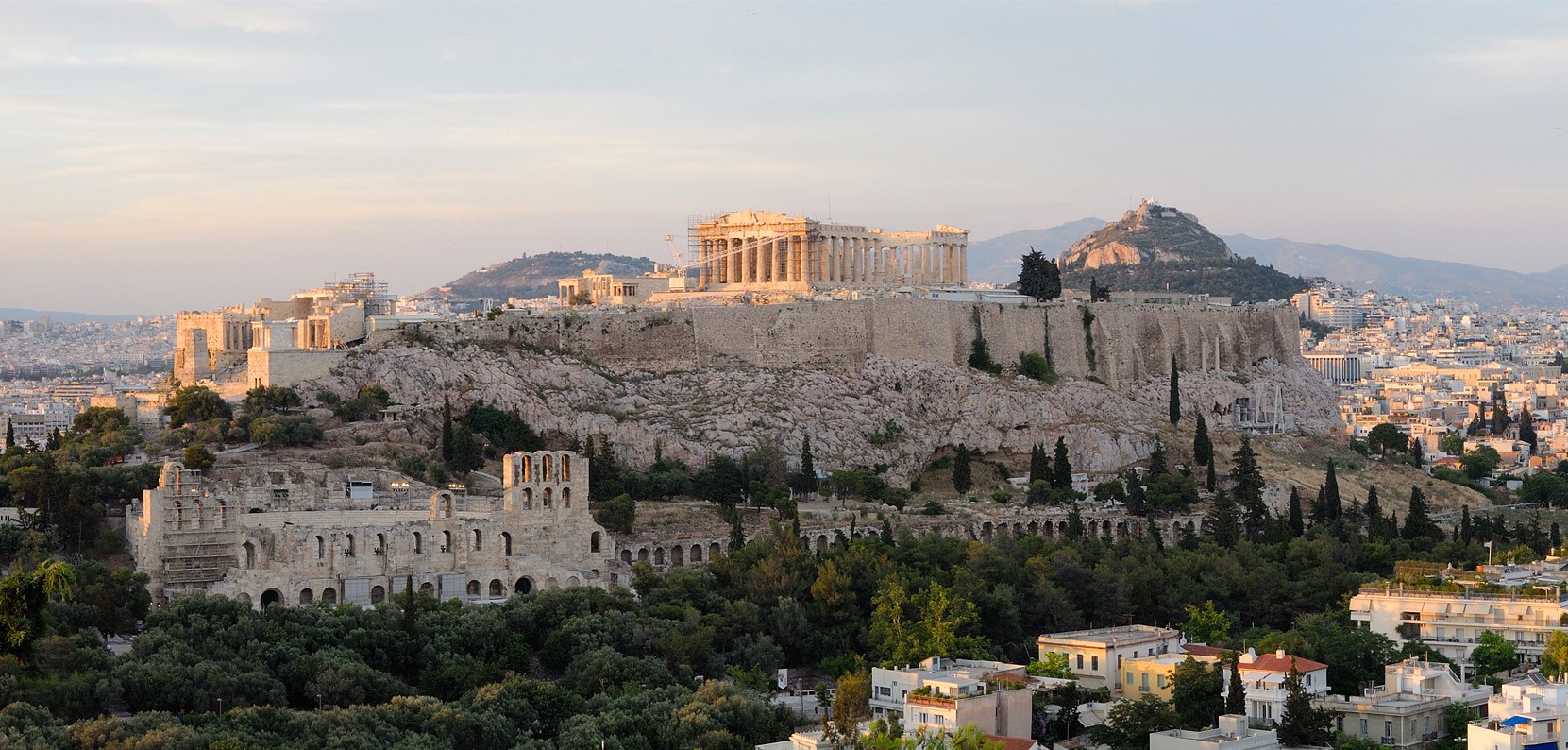Athens: the Beginning, the Middle, the Now

A long, long time ago, before Athens was Athens, it was Cecropia.
In Greek mythology, there is a creature, half-man, half-snake, called Cecrops (or Kekrops). It was these people that founded the city.
Cecropia thrived, so much so that the Gods themselves became jealous of it, as it was one of the only Ancient Greek cities to be independent of the Olympian Gods.

Both Poseidon, God of the Sea, and Athena, Goddess of Wisdom, wanted Cecropia to be named after them, so Zeus decided it would down to a contest. Both Gods would go to Cecropia, present the King with gifts, and whichever he chose, that god would become the patron of the city.
So, Poseidon and Athena went forth to Cecropia and presented King Cecrops I with gifts at the Acropolis, which would later be where the Parthenon stands. Poseidon brought his trident down upon the ground, and a water spring formed. Athena planted an olive branch, thus creating the first olive tree.
King Cecrops I chose Athena’s gift; Poseidon’s water spring turned out to be salt water, thus not very useful to the city. But Athena’s gift represented peace and friendship and prosperity, which seemed much more appealing to the people.

Cecropia was renamed Athens, to honor the olive tree that Athena planted, and the gift of peace and prosperity bestowed upon the people and the city.
However, this moment sparked a rivalry between the God of the Sea and the Goddess of Wisdom, which would influence many other myths and stories to come. But that’s for a later date, back to Athens.
Athens would come to be a staple city throughout many fantastic Greek stories. The tale of Aegeus and Theseus began in Athens:
Aegeus was the King of Athens, and during a game event held in the city, the son of King Minos of Crete was killed. King Minos declared war, and upon his victory, required young citizens of Athens to be sent to Crete as gifts to the Minotaur.

Eventually, Theseus, son of Aegeus, went to slay the Minotaur to end his cities suffering. He emerged victorious, and returned to Athens, the Crete no longer held control over Athens. This story, though, has much more to tell.
Athens today is a vast city, stretching out across the Attica plain. The city holds one-third of the entire population of Greece, and holds much of it’s history in the streets.
Athens has thrived for 7,000+ years, and it shows in the architecture. The center of the city is a park where many of the ancient buildings sit, before being surrounded by 30 km (18 miles) of more modern buildings.
Athens was the birthplace for many things in both mythology, and in real life. Democracy started in Athens, and so did the centuries-long rivalry between Poseidon and Athena, which we may revisit again in other myths… but we shall see.
As always, thank you for reading and I will see you again soon! Αντίο, Σοφία.



